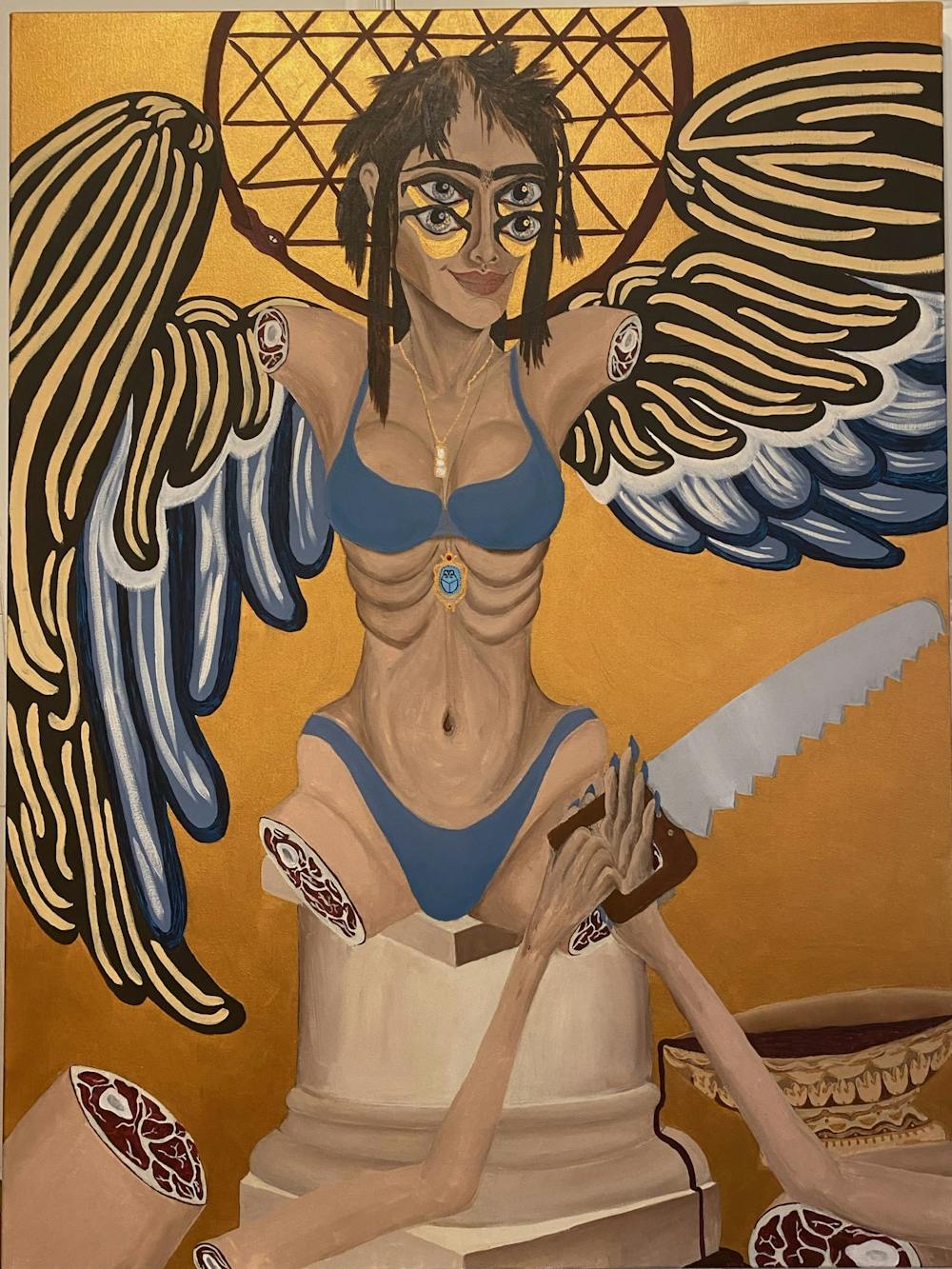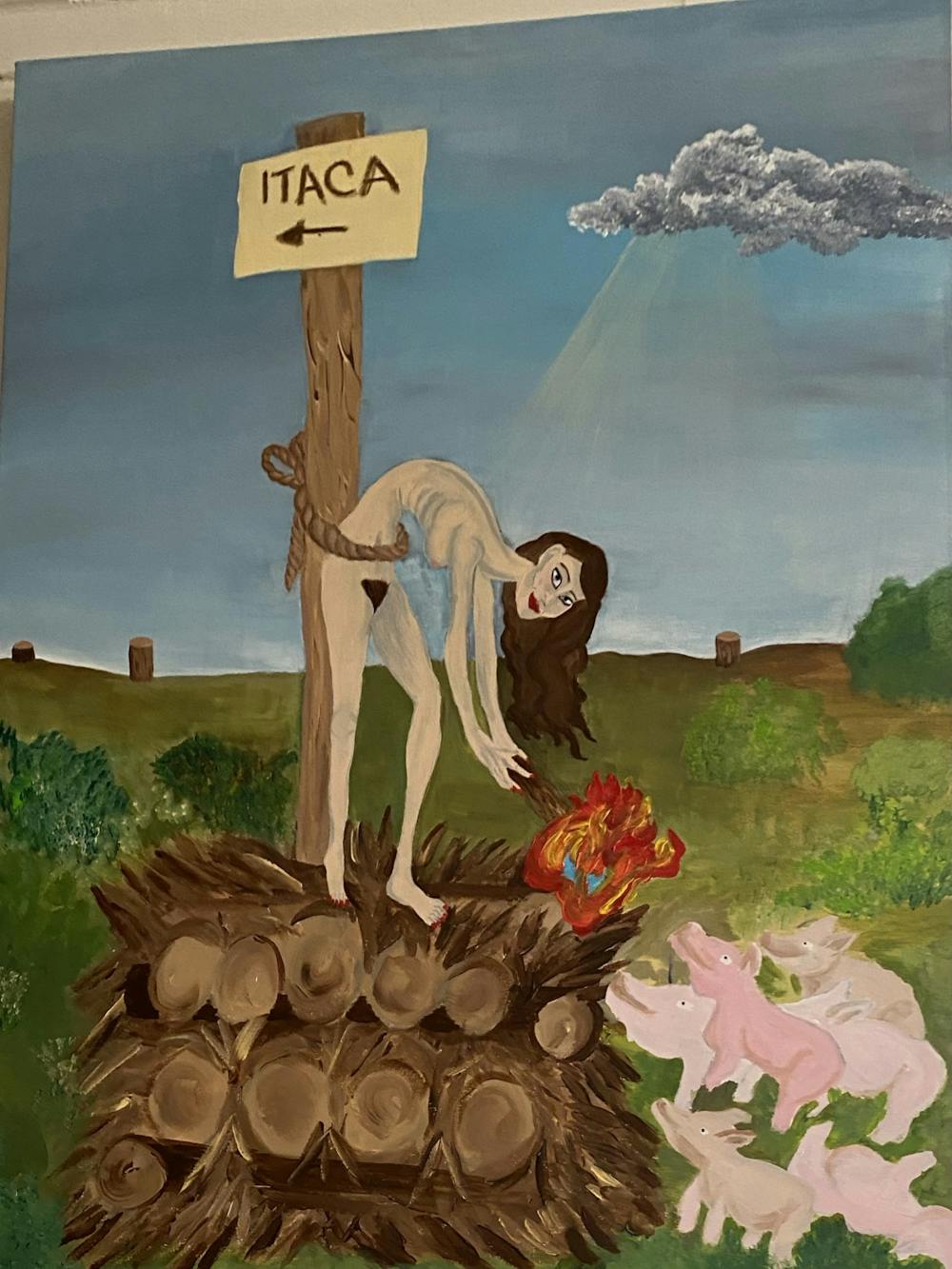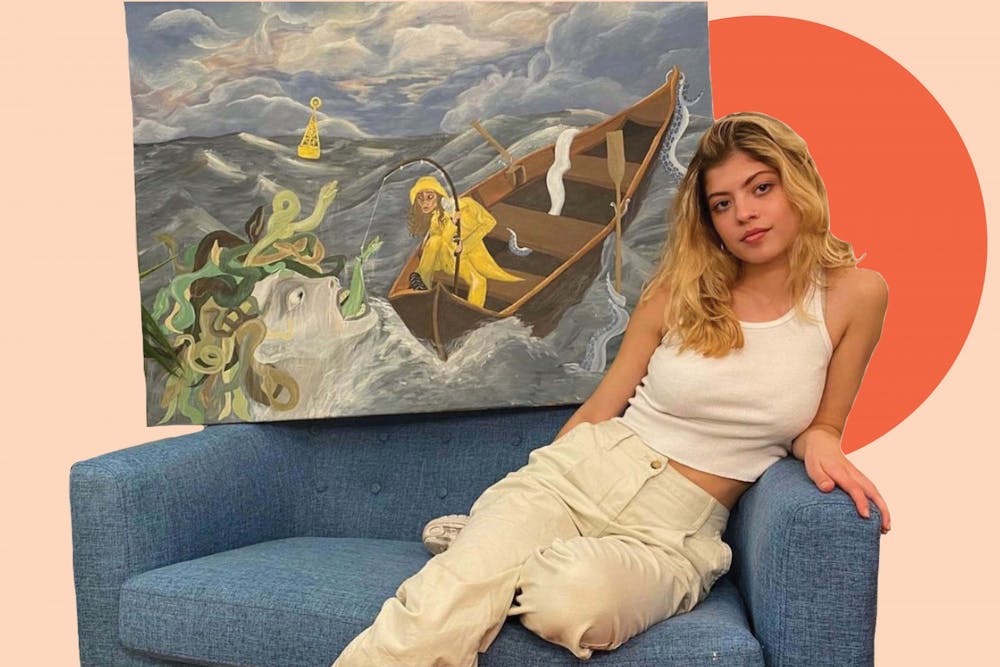Much like the rest of us, Lua Beckman (C ‘22) has spent a lot of time throughout the pandemic in her room—except that hers has doubled as a painting studio. The room itself is huge with high ceilings, and her easel sits in the very center surrounded by a bunch of mirrors, which are helpful for looking at a painting from a new perspective and identifying areas that still need work.
When classes first transitioned online, Lua would turn her camera off and paint as the lectures played in the background—something she quickly learned was “very unacceptable” in the eyes of her professors. Although this might seem like a way for her to check out of her classes, Lua actually engages a lot of her course materials and concepts in her paintings.
With a gender, sexuality, and women's studies major and cognitive science and cinema studies minors, Lua’s academic interests certainly seem to fulfill her goal of “learning how to better orient [herself] in the world.” She recognizes that her studies may seem a bit all over the place, but these three disciplines come together seamlessly in her art.

Photo courtesy of Lua Beckman
While she has had formal training in drawing, painting is a fairly new medium for Lua. She began playing around with it in 2019 but only became serious about it during this past school year, spending hours teaching herself different techniques for working with acrylic paint. She has also experimented with other mediums like charcoal and sculpture, the latter of which she used and produced a piece she describes as “horribly ugly.” Ultimately, she's found that painting is the best medium for her to express her ideas, which often center around a specific character or narrative.
Lua begins each painting with something she’s read—often from her gender studies and cognitive science classes. “I could link a book to each painting,” she explains of her work. For example, one of her series deals with female archetypes in mythology, drawing on and retooling Carl Jung’s psychoanalytic theory to explore these ideas. In the case of her blue labyrinth painting, Lua drew upon Jung’s idea that to become independent, the man must kill the beast that represents his attachment to his mother and rescue the damsel.

Photo courtesy of Lua Beckman
But rather than take this theory at face value, Lua questioned the perspective that seemed to underly this idea. “When I was reading that I was like, ‘Well, how do I relate to that, as someone who's not a man, as someone who could be a mother, and at this point in my life is the one who would need saving?’”
Much like Jung, Lua began with the idea of a person wandering through a labyrinth. But rather than making the main character a male warrior seeking to save a damsel, she paints a woman—herself—wearing pajamas and stumbling across a pregnant woman, as shown in the image above.
A lot of her paintings’ main characters are actually Lua herself, and they represent her emotions and thoughts at different times in her life. The blue labyrinth represents her search for independence and a sense of identity after a difficult period where she felt like that was lost.
Another example of this is the painting of the woman at the stake, which was the first painting in her mythologically–inspired series. The story behind the painting comes from Circe from the Odyssey, who is a magical witch with her own island that lures men in and turns them into pigs. Though Circe's story might seem empowering for women at the surface, “her whole existence is still defined by relationship to men,” Lua explains. “This [painting] was at a transitional point in my life, where I was just ready to kill that side of myself.”

Photo courtesy of Lua Beckman
Her other paintings explore a range of related themes and styles, often centering around psychoanalysis and mythology—Medusa and a female fisherman, the idea of the phallus in psychoanalysis, and even some more abstract geometric pieces. These are the topics where her interests in gender studies and cognitive science converge most often, so they tend to be the primary sources of her inspiration.
Aside from painting and psychoanalysis, Lua also loves film and video production. Recently, she received First Prize at the Penn Film Festival for her short film Quarantined which captured the isolation she experienced during her experience of becoming infected with COVID–19 in February. The film takes a montage approach to representing this feeling, highlighting the repetition of spending two weeks separated off from the rest of the world.
Lua has, like many, felt this feeling of isolation during the pandemic, but notes that feeling alone with her thoughts has not been something unique to her experience this year. Being an artist at a less artistic school has felt lonely at times. But Lua notes that this truth has also paradoxically given her a lot of space to really focus on her art and develop her own style. “[Being at Penn has] allowed me to really just be alone with my thoughts and my process, and I like the outcome,” she says.
But there have been some drawbacks to the more pre–professional culture cultivated at Penn. In typical Penn fashion, Lua has been given some advice on how to monetize her hobby and love of art. She laughs as she recalls "the amount of people I have telling me to turn my paintings into NFTs, like the non-fungible tokens.” She’s also gotten suggestions to sell the physical artwork, but for now, Lua's happy to keep her art just as a hobby.
Going into her senior year, Lua still isn’t sure exactly what her goals are post graduation, but she has a few ideas. “I’m thinking about applying to grad school—probably related to gender studies or cinema studies. Or maybe film school? I don't know,” she finally says. What Lua is certain about, though? Her desire to continue expanding her creative skills and making art that feels meaningful to her.

